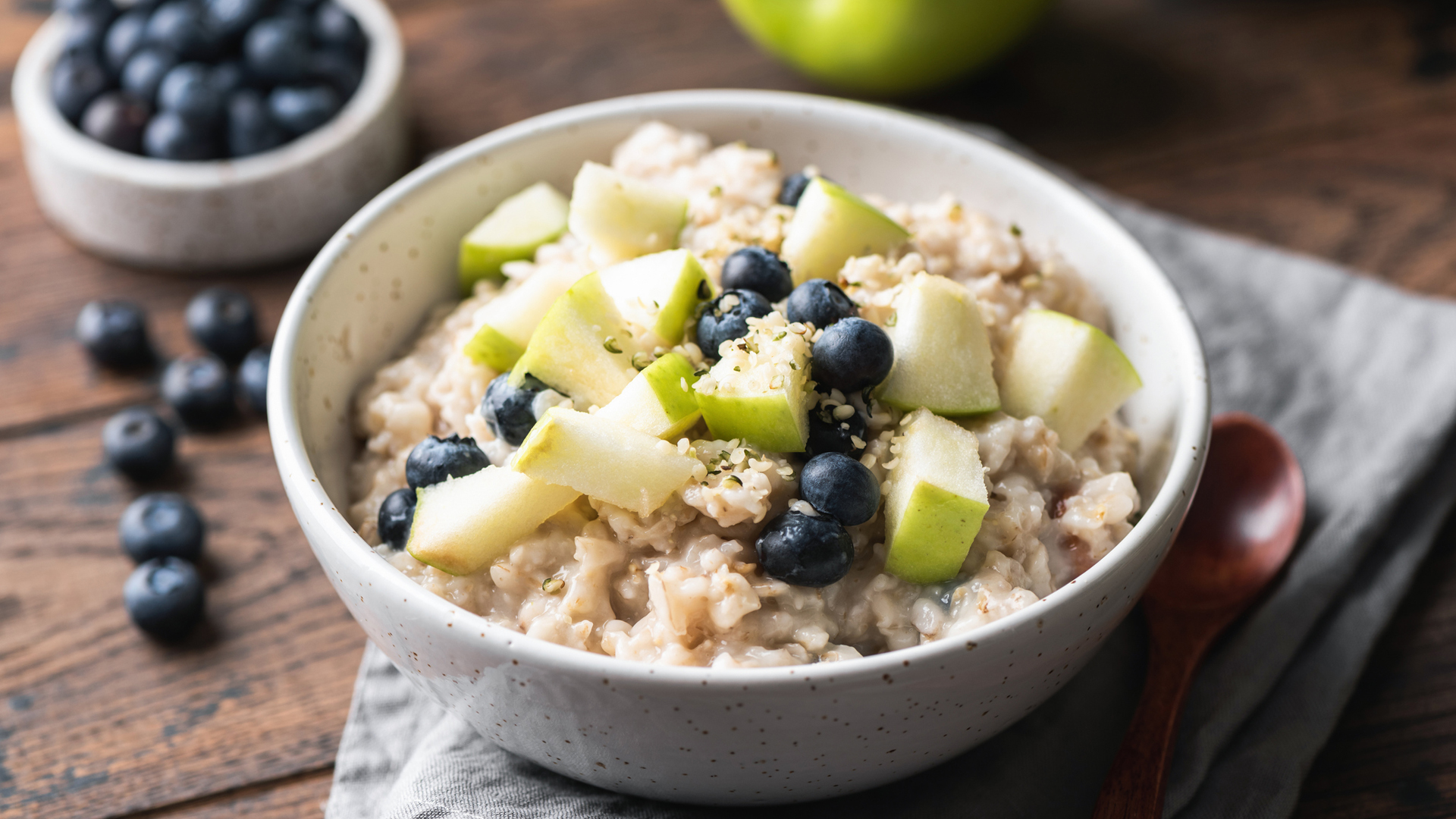What are antinutrients — and can they really harm our health?
What are antinutrients? We explore what the science says about these compounds and uncover whether or not they actually pose a risk to our health

What are antinutrients? If you’ve never heard of them before, you’re not alone. Most of us know that we need a range of different nutrients to function properly. However, few are aware of the so-called antinutrients. When it comes to what they are and whether or not they can harm our health, the answers may not be straightforward.
“Antinutrients are compounds found in plant foods that interfere with the body’s ability to absorb some essential nutrients,” explains Reema Patel, registered dietitian at Dietitian Fit & Co. “The most common antinutrients include lectins, tannins, phytic acid, calcium oxalate and protease inhibitors. They are mostly found in grains, seeds and legumes. If you suffer from malnutrition or your diet consists mainly of such foods, these antinutrients may be a concern,” she says.
At the same time, Patel stresses that antinutrients are not necessarily harmful. “If you are eating a varied diet, these compounds are of little concern,” she says.
“Many antinutrients have also been associated with health benefits, such as anti-inflammatory, cholesterol-lowering, blood-sugar stabilizing and gut-friendly properties and therefore they are important foods to include in a healthy diet,” adds Dr. Claire Shortt, nutrition scientist at FoodMarble.
Below, we speak to a range of experts to cut through the confusion around whether or not these plant-based compounds are harmful to our health. Plus, we’ll reveal the most common antinutrients and which plant-based foods you’ll find them in.
What are antinutrients?
According to the Journal of Functional Foods, antinutrients is a term used to describe plant compounds traditionally considered harmful to health due to their potential to interfere with the absorption of essential nutrients. They appear to be a form of defense mechanism with which plants protect themselves from the dangers posed by insects and harmful microbes. In humans, antinutrients are thought to lead to nutritional deficiencies, bloating, nausea, rashes and headaches.
At the same time, a 2020 review published in Nutrients revealed that scientists are increasingly questioning the general advice to avoid foods containing antinutrients. The evidence is growing that many of these antinutrients may actually be beneficial to our health.

What are the most common antinutrients?
According to the Harvard School of Public Health, food compounds traditionally classified as antinutrients include:
- Glucosinolates: Found mostly in cruciferous vegetables like broccoli, brussel sprouts, cabbage and kale. Glucosinolates may prevent the absorption of iodine. Low iodine intake may disrupt the functioning of the thyroid gland and increase the risk of goiter (a swelling and enlargement in the neck).
- Lectins: Found mostly in legumes like beans, peanuts and soybeans, as well as whole grains. Lectins may interfere with the absorption of calcium, iron, phosphorus, and zinc.
- Oxalates: Found mostly in green leafy vegetables, tea, beans, nuts and beetroots. Oxalates may bind to calcium and prevent it from being absorbed in the digestive system.
- Phytates (phytic acid): Found mostly in whole grains, seeds, legumes and some nuts. Phytates may decrease the absorption of iron, zinc, magnesium, and calcium.
- Saponins: Found mostly in legumes and whole grains. Saponins can interfere with normal nutrient absorption.
- Tannins: Found mostly in tea, coffee and legumes. Tannins may decrease iron absorption.
Are antinutrients actually harmful?
According to a review published in the Journal of Functional Foods, whether antinutrients are harmful may depend on a range of different factors. For example, most negative effects are observed when foods rich in antinutrients are eaten raw. However, when they are cooked or processed, for example through soaking, sprouting, germination, fermentation or milling, they do not tend to have similar negative effects.
They may also have different properties depending on whether they are consumed on their own, or as a part of a balanced meal. And how antinutrients affect you may be linked to your metabolism and health status too. Not to mention, most of the available evidence comes from animal and in vitro studies, rather than high quality clinical trials. As a result, it is difficult to say whether it can be extrapolated to human beings.
Having said that, certain people may need to be more aware of their food choices.
“Some individuals may be more susceptible to the effect of antinutrients if they suffer from mineral deficiencies or are at greater risk of such a deficiency,” says Dr Shortt.

Claire Shortt holds a Bachelor of Science in Microbiology and a PhD in Infection Biology from the University College Dublin. She is currently lead scientist at Food Marble.
For example, antinutrients which interfere with calcium absorption may not be suitable for individuals struggling with osteoporosis. Similarly, people with anemia may need to avoid food compounds that could limit the iron bioavailability. In such cases, careful meal timing, dietary supplementation and thorough cooking practices — or avoiding these foods altogether — may be advised.

Glucosinolates
Glucosinolates is a term encompassing a large group of plant-based compounds containing sulfur and nitrogen. They are mainly found in cruciferous vegetables, such as broccoli, cabbage, cauliflower, brussel sprouts, rapeseed, mustard, and horseradish. Glucosinolates are routinely described as goitrogens — substances that disrupt the production of thyroid hormones. However, the science behind this claim is not straightforward.
According to a review published in the Molecules journal, cruciferous vegetables are mostly harmful when eaten raw. That’s because they contain an enzyme called myrosinase. The role of myrosinase is to hydrolyze glucosinolates to various highly bioactive metabolites like isothiocyanates and nitriles. Cruciferous vegetables use these metabolites to protect themselves from predators. But when they are ingested by humans, these substances can interfere with iodine absorption and contribute to thyroid problems. Thorough cooking processes inactivate myrosinase and allow the glucosinolates to be partially absorbed in their intact form.
But not all cruciferous vegetables will impact our thyroid health to the same extent. A review in Nutrition Reviews stated that the most harmful plants are those that contain glucosinolates that degrade to goitrin and thiocyanate. Their study has shown that in order for the goitrin to limit the iodine bioavailability, its amount has to exceed 194 μmol. Only collards, Brussels sprouts, and Russian kale were found to contain enough goitrin to potentially decrease iodine uptake by the thyroid. Whereas the levels of thiocyanate were generally considered too low to pose a significant risk for thyroid health.
Lastly, the evidence is growing that glucosinolates may actually be beneficial to our health. According to a review published in the Frontiers in Pharmacology journal, these compounds may lower inflammation levels, combat free radicals and protect the organs from damage inflicted by various chemicals.
Lectins
Lectins is a term used to describe proteins that can bind to carbohydrates. These antinutrients are mostly found in legumes like beans, peanuts and soybeans, as well as whole grain cereals.
According to the Journal of Functional Foods, lectins are able to attach themselves to carbohydrate components of red blood cells. This in turn can make them stick together, increasing the risk of dangerous blood clots. And because lectins are resistant to digestive enzymes, they can adhere to our intestinal walls and increase their permeability. That process can result in an overactivated immune system and a decreased bioavailability of nutrients like calcium, iron, phosphorus, and zinc.
However, cooking in high temperatures, germination and fermentation have been shown to significantly reduce the lectin content in foods. Furthermore, there is evidence that lectins can be beneficial to our health. As stated in the Critical Reviews in Food Science and Nutrition journal, these compounds may help destroy cancer cells, reduce the risk of type 2 diabetes and even decrease the potency of the HIV virus.

Oxalates
Oxalates are strong organic acids found mostly in green leafy vegetables, tea, beans, nuts and beetroots. They have the ability to bind to calcium, iron and zinc, creating water-insoluble salts. Oxalates have also been traditionally linked to an increased risk of developing kidney stones. But as with most antinutrients, the science behind this claim is not black and white.
It is important to point out that there are two types of oxalates: soluble and insoluble. Soluble oxalates have a much greater ability to form kidney stones than the insoluble ones.
Other factors may contribute to the formation of oxalate kidney stones too. These include low dietary intakes of calcium, magnesium and potassium, reduced kidney filtration and high vitamin C consumption. There is also some evidence that gut microbiota may interfere with this process, as reported in the Nutrients journal.
Lastly, certain cooking processes can reduce the amount of oxalates. These include boiling, soaking and fermentation of foods containing these antinutrients.
Phytates
Phytates (mostly phytic acid) are phosphorus-based compounds found mostly in whole grain cereals, pulses, nuts and seeds. According to the Journal of Functional Foods, oats, dry fava beans and amaranth are the richest sources of these antinutrients. Phytates can bind to zinc, iron and calcium under the acidic pH in the stomach, reducing their bioavailability in the digestive tract.
“Phytic acid can also inhibit the activity of digestive enzymes necessary for the breakdown and absorption of macronutrients,” says Iustin Bilibou, dietician at Cygnet Health Care.
However, whether they can have negative effects on our health may depend on several factors. It appears that phytates are less harmful when they are ingested as a part of a balanced meal. Moreover, vitamin C has been shown to reduce the negative effects of phytates. It also needs to be pointed out that cooking, soaking, fermentation and germination can decrease the levels of these antinutrients.

Saponins
Saponins is a term used to describe a complex and chemically diverse group of compounds that are able to ‘foam’ when mixed with water. They are mostly found in legume plants. Saponins are considered to be antinutrients due to their ability to interfere with nutrient absorption and the functioning of red blood cells, as described in the Food Chemistry journal.
At the same time, these compounds may be more beneficial than previously thought. According to the Journal of Medicinal Food, saponins are sensitive to high temperatures. Cooking, soaking and blanching significantly reduce their levels. There’s also growing evidence that these compounds can help with a range of digestive diseases, as stated in the Pharmacological Research journal.
Tannins
Tannins are a group of bitter-tasting polyphenols present in many different plants. The highest concentration of these antinutrients is typically characteristic of legumes, coffee, tea, wine and grapes. According to the Trends in Food Science & Technology, tannins can slow down digestive enzymes and affect the absorption of micronutrients, particularly iron.
At the same time, evidence is growing that, in smaller quantities, these compounds can be highly beneficial to our health. According to the Archives of Toxicology journal, they may prevent a host of cardiovascular, neurological and metabolic disorders.
As opposed to many other antinutrients, tannins are resistant to heat. However, their negative effects may be reduced by eating iron absorption enhancers. These may include vitamin C, meat, fish and poultry.
This article is for informational purposes only and is not meant to offer medical advice.
Sign up for the Live Science daily newsletter now
Get the world’s most fascinating discoveries delivered straight to your inbox.

Anna Gora is a health writer at Live Science, having previously worked across Coach, Fit&Well, T3, TechRadar and Tom's Guide. She is a certified personal trainer, nutritionist and health coach with nearly 10 years of professional experience. Anna holds a Bachelor's degree in Nutrition from the Warsaw University of Life Sciences, a Master’s degree in Nutrition, Physical Activity & Public Health from the University of Bristol, as well as various health coaching certificates. She is passionate about empowering people to live a healthy lifestyle and promoting the benefits of a plant-based diet.










